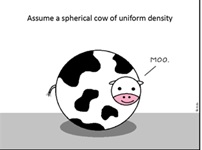The properties of the neutron – a massive particle, whose de Broglie wavelength is of atomic spacing for kinetic energies that are equivalent to room temperature, with net neutral charge, spin ½, and interaction with the nuclei of matter via the strong nuclear force – enable one to gain unique insights into materials science and the nature of the universe. Imaging with neutrons has seen strong development in the past two decades, driven by the rapid improvements in digital cameras and the ability to use the properties of the neutron to generate a variety of image contrasts. In this talk, I’ll give an overview of the start of the NIST neutron imaging program and how we’ve augmented our measurements with a simultaneous X-ray source [1]. I’ll describe how a new neutron polarimetry scheme enabled the first image of a physically isolated electric field [2]. I’ll conclude by presenting our early results on the creation of a far field grating neutron interferometer (FFI) [3,4]. The FFI has two primary applications. One application space is precision measurements, as the FFI can have a 10 m long baseline, so that it has 100x the sensitivity of the state-of-art neutron interferometer. With this enhanced sensitivity, we will attempt to measure Newton’s gravitational constant to help inform the discrepancy in this least-well-known fundamental constant of nature. The other application focuses on a materials science, the FFI generates dark-field images that are the equivalent of three-dimensional small angle neutron scattering data. Whereas traditional SANS averages the scattering from a 2 cm diameter, 1 mm thick volume requiring a uniform sample, i.e. a spherical cow, the FFI will be able to image heterogenous samples, by providing the SANS microstructural information (1 nm-10 µm) averaged over a voxel of about 50 µm, from a sample that is a few centimeters in size. Such multiscale images provide new insights into additive manufacturing, batteries, and geology.


 The College of Arts
The College of Arts